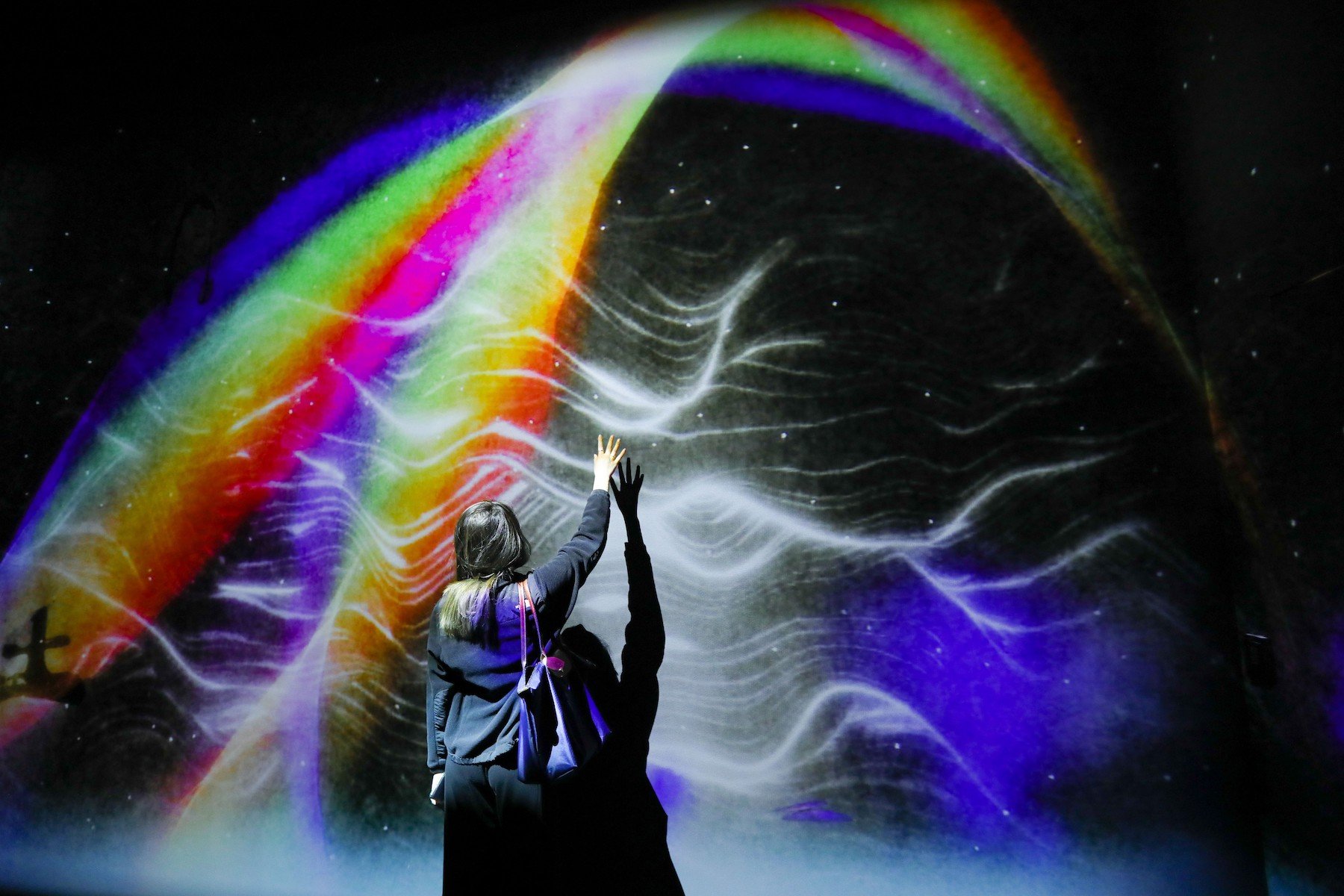
San Francisco’s Asian Art Museum is only the second art institution in the U.S. to welcome TeamLab, the ultra-popular Japanese art collective/interactive design corporation that has drawn crowds around the world. The debut of TeamLab’s major series of installations, dubbed “teamLab: Continuity,” is designed to mark a big moment for the Bay Area museum, the first show in its new $103 million, 8,500-square-foot Akiko Yamazaki and Jerry Yang Pavilion.
For those who have been following TeamLab’s development, the style is familiar: darkened, immersive chambers combined with lavish all-around projections; lush, cinematic music; dense, swirling images drawn from nature projected all around; and lots of interactive bells and whistles, sometimes literal ones.
Installations have poetic names like Forest of Flowers and People: Lost, Immersed and Reborn and Born From the Darkness a Loving, and Beautiful World, and respond to visitors as they traverse the space. Sketch Ocean, a section of “Continuity” for kids, allows you to color in their own sea creature and then scan it, so that it appears in the animated, underwater world of the show.
“Long story short, it is the art experience like none other,” Asian Art Museum head Jay Xu told KPIX. “It’s most cutting edge, but it’s also deeply rooted in artistic tradition.”
TeamLab had a stand-alone show in Silicon valley, sponsored by Pace Gallery in 2016, “Living Digital Space and Future Park,” which featured very similar immersive light environments. That show (ticketed, unlike most gallery shows) blew through attendance projections, luring tens of thousands of visitors. Pace went on to found its SuperBlue project, promoting immersive installations, which it launched in Miami with a show featuring TeamLab earlier this year
See more images from “TeamLab: Continuity” at the Asian Art Museum, San Francisco, below.
A visitor interacts with the exhibit in “teamLab: Continuity” at Akiko Yamazaki and Jerry Yang Pavilion of Asian Art Museum in San Francisco. Photo by Liu Yilin/Xinhua via Getty Images.
“teamLab: Continuity” at the Asian Art Museum, San Francisco. Photo by Liu Yilin/Xinhua via Getty Images.
“teamLab: Continuity” at the Asian Art Museum, San Francisco. Photo by Liu Yilin/Xinhua via Getty Images.
“teamLab: Continuity” at the Asian Art Museum, San Francisco. Photo by Liu Yilin/Xinhua via Getty Images.
“teamLab: Continuity” at the Asian Art Museum, San Francisco. Photo by Liu Yilin/Xinhua via Getty Images.
“teamLab: Continuity” at the Asian Art Museum, San Francisco. Photo by Liu Yilin/Xinhua via Getty Images.
“teamLab: Continuity” at the Asian Art Museum, San Francisco. Photo by Liu Yilin/Xinhua via Getty Images.
“teamLab: Continuity” at the Asian Art Museum, San Francisco. Photo by Liu Yilin/Xinhua via Getty Images.
“teamLab: Continuity” at the Asian Art Museum, San Francisco. Photo by Liu Yilin/Xinhua via Getty Images.
“teamLab: Continuity” at the Asian Art Museum, San Francisco. Photo by Liu Yilin/Xinhua via Getty Images.